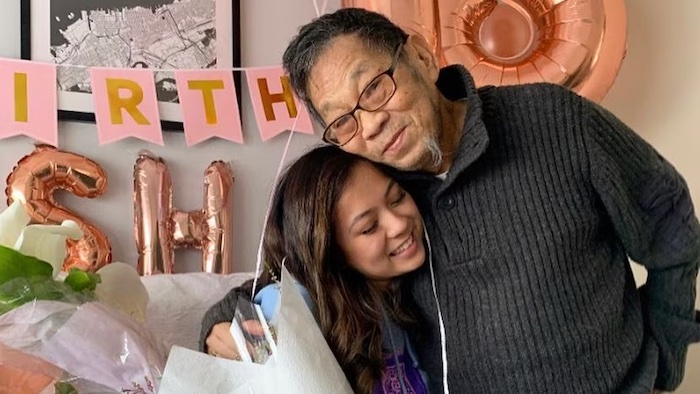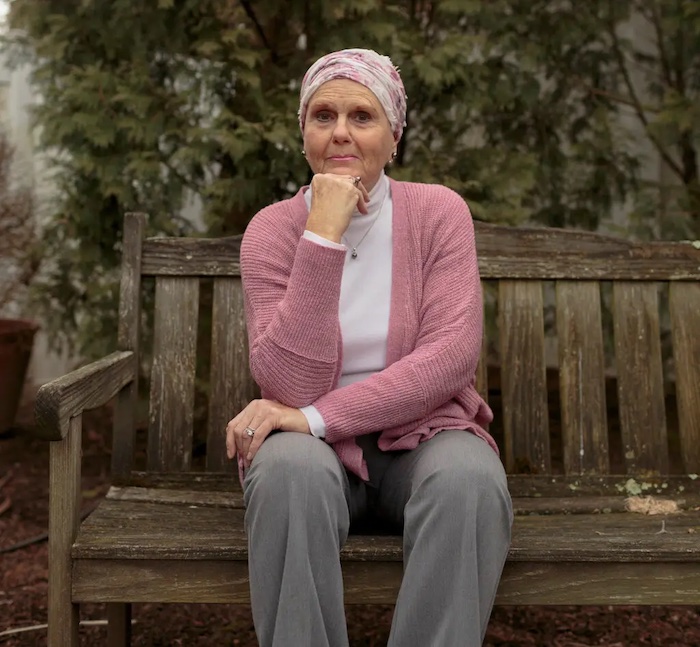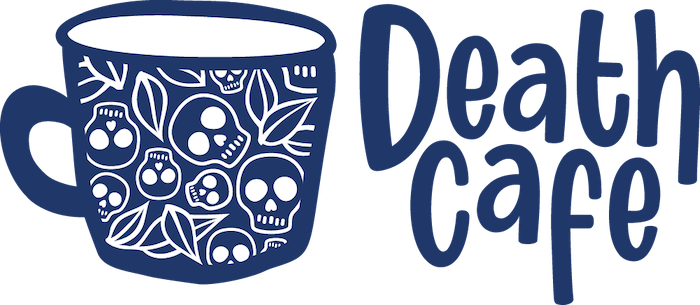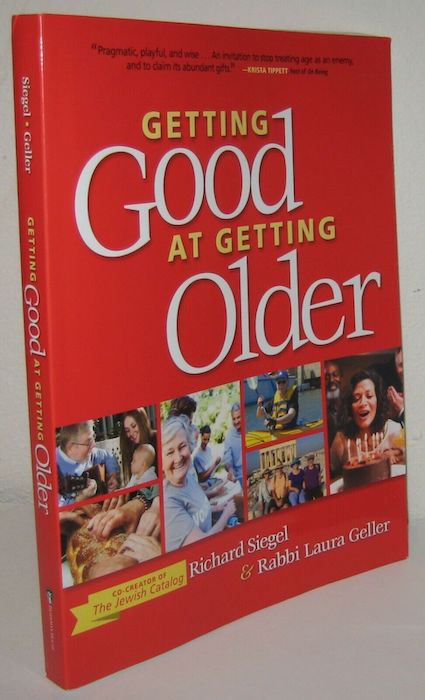— Why some Asian families avoid speaking about death

My Filipino-Chinese grandfather taught me many things as I was growing up — from how to make spring rolls to the importance of family.
One of the most important lessons he passed on, was that no good ever comes from lying, no matter the circumstances.
“We must obey the word of the Lord,” he would tell us.
But for the last month of his life, my whole family and I withheld the truth from my grandpa.
In April last year, after more than two years on dialysis, he was given a month to live — and we decided not to tell him.
Being born and raised in Australia, I did not understand what was happening — I thought this was something that only happened in my family.
But families withholding information about a life-threatening diagnosis is actually common practice in Asian cultures.
It is believed that speaking openly about death can do more harm than good, bringing bad luck, fear and emotional pain.
Yongxian Luo, a professor of Chinese studies at the University of Melbourne, said Asian families regularly chose to hide the truth about a terminal illness from their loved ones to protect them.
Professor Luo calls them “non-disclosure topics”.
“Certain topics, which are common for people to talk about in Anglo-American culture, are taboos or at least not preferred in discourse,” he said.
“For non-disclosure topics, the major difference is that Asian cultures do not want to talk about negative things.”
Dr Nicola Atkin, from the Peter MacCallum Cancer Centre in Melbourne, said that in her experience caring for patients and families from Asian cultures, they often put a greater emphasis on the patient as part of a family and community than on individualism.
“Some cultures have far less emphasis on the individual and individual autonomy but more on relational autonomy and a view of the patient in the context of their family, community and culture,” she said.
“This focus from family members on non-disclosure often goes hand in hand with a very strong sense of responsibility and duty to protect and care for their loved ones.”
Professor Luo said this emphasis on family shaped how people in Asian cultures engaged in most social and interpersonal relationships.
“Mutual trust is a top priority,” he said.
“In Hong Kong, a number of successful family businesses don’t hire outsiders because family members are more trustworthy.
“This is something Asian people would bear in mind when they think about social relationships.”
Sometimes these conflicts between Eastern and Western values can happen within families, particularly those in the diaspora.
Based on her own experience dealing with her grandmother’s cancer diagnosis, US filmmaker Lulu Wang wrote and directed The Farewell, a 2019 drama/comedy that explores the cultural differences in approaches to death.
In the film, the mother of the central character, Billi Wang, relates a saying in China: “When people get cancer, they die. It’s not the cancer that kills them, it’s the fear.”
So when Chinese-born American Billi’s “nai nai” (grandmother) is given a few weeks to live, her family decides not to tell her.
The family struggles with this decision, especially Billi who believes her grandmother has the right to know.
“Isn’t that wrong to lie?” Billi asks her grandmother’s doctor.
“It’s a good lie,” he responds.
In Asia, doctors will generally comply with a family’s wishes when disclosing a diagnosis, using less specific and threatening terms such as “fever” or “sickness”.
Dr Atkin said both the family and patients usually shared the same attitudes when it came to this practice.
“Families have stated that they believe the patient will become depressed, lose all hope or deteriorate more quickly if they know the details of their disease or their prognosis,” Dr Atkin said.
“Usually the patient has been happy to delegate to family members or has wanted limited information and the family have been relatively accepting of this.”
However, Dr Atkin said the practice of “non-disclosure” in Western countries could present conflicts between ethical principles which needed to be “weighed against each other”.
“Modern Western cultures tend to have a strong focus on the importance of the individual patient’s autonomy, and the individual making decisions about their own healthcare based on the full information provided by medical teams,” she said.
“Withholding information and making treatment decisions without the patient’s involvement can result in a form of paternalism, affect the patient-physician relationship and the patient’s trust in the doctor.”
Meanwhile, Elizabeth Utting, a senior associate in medical negligence at Law Partners, said as well as the ethical implications there were also legal ones in Australia.
“A medical negligence case could arise where withholding such a diagnosis meant that the patient could not receive medical treatment they required to improve their illness or prognosis,” she said.
“A medical negligence case could also arise if a patient’s prognosis was not communicated to the patient, and the patient suffered mental harm as a result of the delay in informing them of the prognosis.
“A doctor’s ethical and legal duty lays with their patient, not their family members.”
An act of love?
It’s not just children who withhold information from elderly parents.
For Filipino-Australian Sarah Jones it was the other way around.
She was 59 years old when she was diagnosed two years ago with terminal uterine cancer and given three months to live.
Her sister, Jessica Cruz, told the ABC Ms Jones decided to keep the prognosis a secret from her children.
“Only my brother-in-law and I knew,” said Ms Cruz, who asked to use pseudonyms for herself and her sister.
“She begged us not to tell her children about it. She continued to tell her kids that it was curable.”
Ms Jones worried about her children’s mental health and was afraid they would get depressed.
“She just wanted them to live a normal life,” Ms Cruz said.
When Ms Jones lost the ability to walk, Ms Cruz told her it was time to tell her children.
“I told her that they had the right to know and that they would understand — but really, I just wanted them to stay with their mum because time was running out,” she said.
Her children found out about her condition from their father, and after seeing her son cry Ms Jones was upset.
But the next day she felt better about the situation.
“They were now prepared,” Ms Cruz said.
“There were no more secrets.”
Deputy director of palliative care at Melbourne’s St Vincent’s Hospital Jennifer Weil said there were many cultural, religious, and personal factors that went into decisions about how much information people wanted shared, especially in relation to terminal illness.
“The challenge for us as doctors is to seek to explore and understand, and avoid our own beliefs and values directing how we share information,” she said.
Dr Atkin said if a patient, based on their cultural beliefs, decided not to have their diagnosis or prognosis disclosed to them, it did not necessarily go against the principle of autonomy.
“My approach is to understand the wishes, preferences and concerns of the family and the patient regarding medical information, explore these sensitively and reassure the family that their loved one will not be given information they don’t want to receive,” she said.
A good lie?
During the first few days after we got my grandpa’s prognosis, I did not want to lie to him — but I felt I had to respect my family’s decision.
Then, towards the end, I began to understand where my family was coming from.
We lied to him because we loved him. We wanted my grandpa to live his last remaining days in happiness instead of pain and grief.
And he did.
The last time I saw my grandpa was the day before he died at a hospital in Melbourne’s western suburbs.
Surrounding his bed was his wife, children and grandchildren. We all stood quietly.
“Thank you, my wonderful family,” he said as he looked up at the faces of his loved ones.
“I’d like to go home now.”
He closed his eyes.
“You will go home soon,” my sister told him.
“We will be at home waiting for you.”
Complete Article ↪HERE↩!






